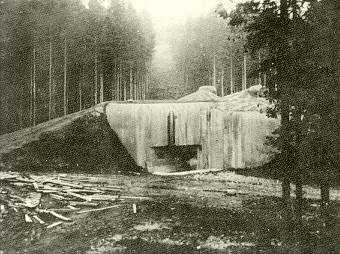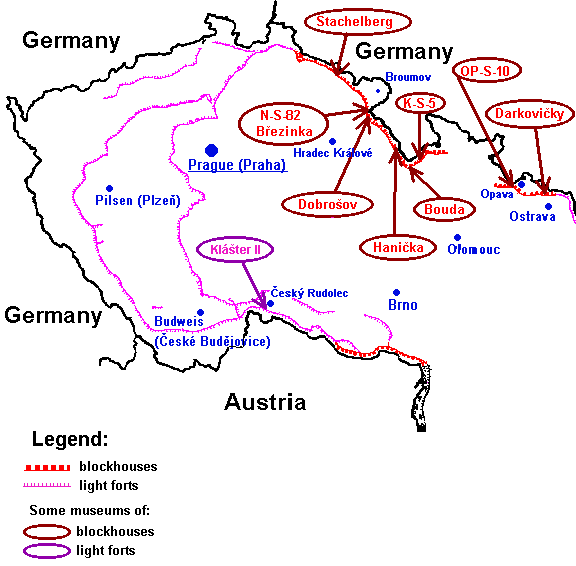You can come across the remains of this fortification system whilst walking near the Czechoslovak border, excursions to the mountains or at skiing. You can run across them in Prague and in an arbitrary place of the Czech Republic as well. Today they are lonesome ferroconcrete monsters, mostly covered by moss, sometimes scrawled by sprayers.
They remind us of very meaningful and grievous events from the Czechoslovak history. Today only few fans are informed about the reasons which caused a construction of one of the most perfect fortification systems in the world during the thirties of the 20th century and their story of devotedness and treachery.
Adolf Hitler had won the elections in Germany in 1933. The young Czechoslovakia had to secure its borders against a surprise German attack. There were two concepts how to do it. The first one - to build a large mobile army, and the second one - to build border fortresses. The first one had a big disadvantage. Czechoslovakia was too small to build a mobile army powerful enough to stop the substantially bigger German army. However the second one had its disadvantages as well. Had the fort line been broken, there would not have been enough strength to prevent the enemy units from entering Czechoslovakia. The second concept won in the end, because of the idea that fortresses could have stopped the enemy as long as the Czechoslovak allied forces (French and British ones) entered the war with an attack against Germany from the west.
In fact the Czech engineers were influenced by the French Maginot Line (the Maginot Line was a system of French border fortresses being built from the early thirties to the beginning of the WWII), so some first types of the Czechoslovak fortresses looked much like the French ones. There were two main types of the fortification lines - the light one and the heavy one:
 Light fortification - basic information, photographs.
Light fortification - basic information, photographs. Heavy fortification - basic information, photographs.
Heavy fortification - basic information, photographs. Infantry blockhouse K-S-5 - more information, plans, photographs.
Infantry blockhouse K-S-5 - more information, plans, photographs.

